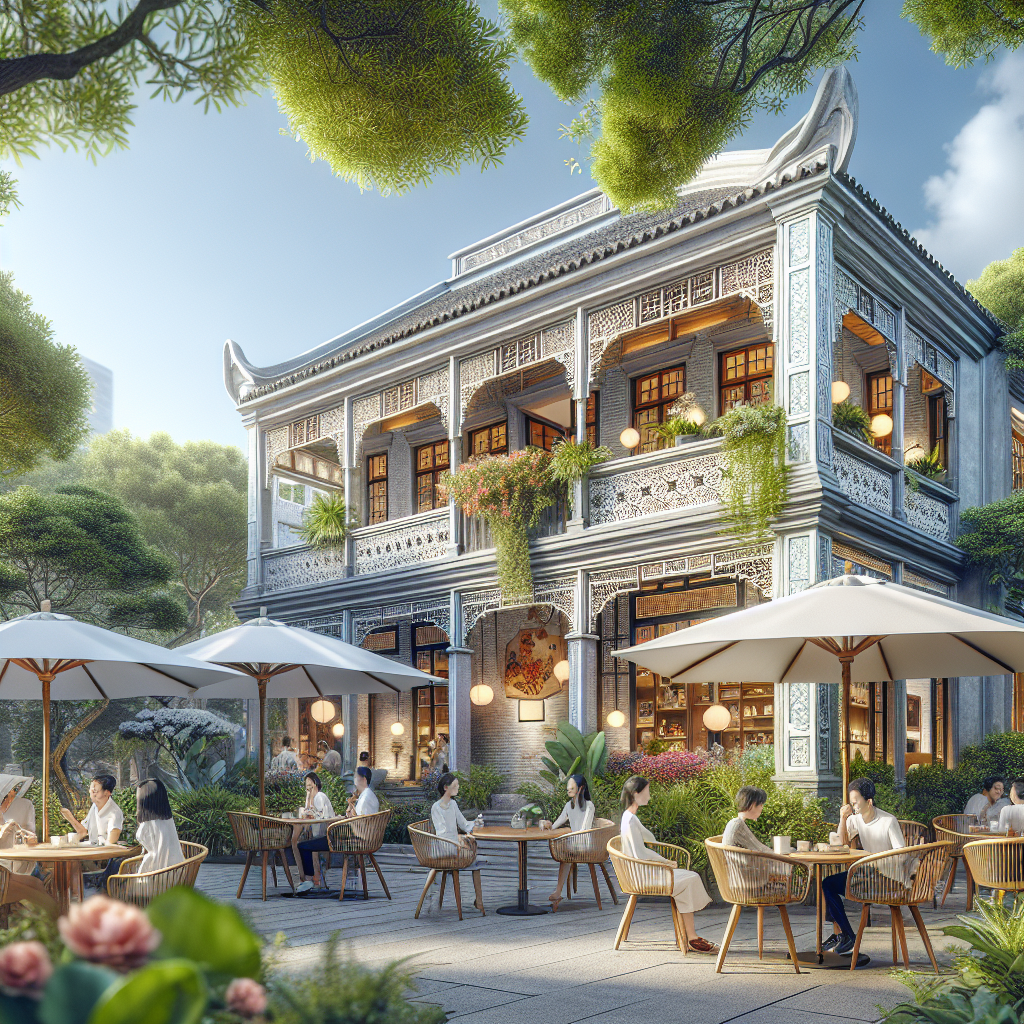Chủ đề Importance Of Cultural Heritage In Modern Cities xuất hiện thường xuyên trong IELTS Writing Task 2, đặc biệt ở các dạng “discuss both views”, “positive/negative development” và “agree/disagree”. Đây là chủ đề giàu ý tưởng, liên quan đến bảo tồn di sản, áp lực đô thị hóa, du lịch, giáo dục và bản sắc. Trong bài viết này, bạn sẽ học được: 3 bài mẫu chuẩn Band 6-9, phân tích chấm điểm theo 4 tiêu chí chính thức, từ vựng học thuật, cấu trúc câu điểm cao, cùng checklist tự đánh giá và chiến lược làm bài.
Một số đề thi thực tế đã được xác minh:
- IELTS Liz (Culture & Tradition): “Some people think that cultural traditions will be destroyed when they are used as money-making attractions aimed at tourists. Others believe this is the only way to save them. Discuss both views and give your opinion.”
- IELTS-Blog (Reported Task 2): “In many cities, old buildings are being demolished to make way for new housing and offices. Is this a positive or negative development?”
- British Council sample: “Museums and art galleries should focus on the history and culture of their own country rather than works from other parts of the world. To what extent do you agree or disagree?”
Trong phần phân tích chi tiết, tôi chọn đề phổ biến về việc phá bỏ công trình cũ trong đô thị để đối chiếu trực tiếp với keyword importance of cultural heritage in modern cities, giúp bạn vừa có khung ý tưởng vừa có ngôn ngữ triển khai hiệu quả cho nhiều biến thể đề bài.
 Sự tương phản giữa tòa nhà cũ bị phá dỡ và công trình hiện đại đang mọc lên trong đô thị hóa
Sự tương phản giữa tòa nhà cũ bị phá dỡ và công trình hiện đại đang mọc lên trong đô thị hóa
1. Đề Bài và Phân Tích
In many cities, old buildings are being demolished to make way for new housing and offices. Is this a positive or negative development?
Dịch đề: Ở nhiều thành phố, các tòa nhà cũ đang bị dỡ bỏ để nhường chỗ cho nhà ở và văn phòng mới. Đây là một sự phát triển tích cực hay tiêu cực?
Phân tích đề bài:
- Dạng câu hỏi: Positive/Negative Development. Bạn cần lập luận rõ ràng nghiêng về tích cực hay tiêu cực (hoặc cân bằng nhưng kết luận phải nhất quán).
- Thuật ngữ quan trọng:
- “demolished” (bị phá dỡ), “make way for” (nhường chỗ cho), “development” (sự phát triển).
- Liên hệ trực tiếp tới chủ đề importance of cultural heritage in modern cities: phá bỏ đồng nghĩa mất bản sắc, ký ức đô thị, du lịch văn hóa; giữ lại có thể hạn chế cung nhà ở và hiệu quả sử dụng đất.
- Lỗi thường gặp:
- Lệch đề: chuyển sang nói về du lịch chung chung hoặc “bảo tàng” mà không liên hệ quyết định phá-dựng.
- Thiếu ví dụ cụ thể: nêu nguyên tắc bảo tồn nhưng không chỉ rõ cơ chế như adaptive reuse (tái sử dụng thích ứng), heritage impact assessment (đánh giá tác động di sản).
- Ngữ pháp mạo từ (the heritage/the city), chia thì nhất quán, giới từ (in/at/to).
- Cách tiếp cận:
- Mở bài: paraphrase + nêu quan điểm (thường là tiêu cực có điều kiện, hoặc cân bằng).
- Thân bài 1: Lợi ích của xây mới (nhà ở, năng suất, tiêu chuẩn an toàn).
- Thân bài 2: Rủi ro mất di sản, bản sắc, du lịch bền vững; giải pháp trung dung như bảo tồn có chọn lọc, chuyển đổi công năng.
- Kết luận: khẳng định lập trường và điều kiện để chính sách trở nên tích cực.
2. Bài Mẫu Band 8-9
Bài Band 8-9 thường thể hiện lập luận chặt chẽ, góc nhìn cân bằng nhưng rõ ràng, dùng ví dụ hợp lý, từ vựng linh hoạt, câu phức tự nhiên và liên kết mạch lạc.
Bài luận (≈300 words):
While densifying cities must accommodate housing demand and modern workplaces, treating historic buildings as expendable is a short-sighted calculus. In my view, wholesale demolition is a net negative, unless guided by rigorous heritage assessment and adaptive-reuse policies that reconcile growth with memory.
Proponents of redevelopment argue that new structures optimise land use, meet safety codes, and enable eco-efficient design. There is truth here: retrofitting decrepit blocks can be costlier than building anew; moreover, compact mixed-use towers can reduce commuting and carbon footprints. Yet these gains are not binary. Many cities have proved that preserving façades, courtyards, or structural shells allows integration of sprinklers, insulation, and lifts without erasing place identity. In short, modern performance and conservation can co-exist.
The deeper loss from indiscriminate demolition is cultural. Old theatres, guild halls, and shophouses function as urban memory, anchoring communities in stories that tourism brochures alone cannot sustain. Once razed, such assets are irrecoverable; ersatz replicas rarely carry the same patina or social meaning. By contrast, adaptive reuse—turning depots into libraries or mills into start-up hubs—converts heritage into productive space while safeguarding authenticity, attracting creative industries and steady footfall. Economically, heritage districts often command price premiums and foster resilient small-business ecosystems.
 Ví dụ về tái sử dụng thích ứng di sản văn hóa, biến nhà máy cũ thành không gian làm việc sáng tạo hiện đại
Ví dụ về tái sử dụng thích ứng di sản văn hóa, biến nhà máy cũ thành không gian làm việc sáng tạo hiện đại
Therefore, the question is not whether cities should grow, but how. A positive path hinges on three safeguards: transparent heritage-impact reviews, conservation zoning that protects ensembles rather than isolated icons, and incentives—tax credits, transfer of development rights—for developers who retain significant fabric. When these instruments are in place, redevelopment becomes additive rather than extractive, enhancing liveability without amputating history.
In sum, uncritical demolition is a negative development because it liquidates a city’s cultural capital. Growth that builds with memory—not over it—serves both present needs and future belonging.
Phân Tích Band Điểm
| Tiêu chí | Band | Nhận xét |
|---|---|---|
| Task Response (Hoàn thành yêu cầu) | 8.5 | Trả lời trực diện câu hỏi, nêu quan điểm nhất quán “negative trừ khi có điều kiện”, phát triển luận điểm với giải pháp cụ thể (adaptive reuse, zoning). Bao quát khía cạnh kinh tế, xã hội, môi trường. |
| Coherence & Cohesion (Mạch lạc & Liên kết) | 8.5 | Bố cục rõ: mở–2 thân–kết; sử dụng signposting tự nhiên (“Yet…”, “By contrast…”, “Therefore…”). Liên kết logic nguyên nhân–hệ quả, so sánh–đối chiếu. |
| Lexical Resource (Từ vựng) | 8.5 | Dùng từ vựng học thuật chuẩn chủ đề: heritage-impact reviews, adaptive reuse, conservation zoning, cultural capital. Collocations tự nhiên, ẩn dụ “builds with memory”. |
| Grammatical Range & Accuracy (Ngữ pháp) | 8 | Phối hợp linh hoạt câu phức, mệnh đề quan hệ, phân từ; chính xác cao. Có vài cấu trúc nhấn mạnh tinh tế nhưng không phô trương. |
Tại Sao Bài Này Đạt Điểm Cao
- Lập luận cân bằng: thừa nhận lợi ích xây mới trước khi phản biện.
- Dùng khái niệm chuyên đề: adaptive reuse, transfer of development rights.
- Ví dụ định tính rõ: nhà kho thành thư viện, xưởng thành start-up hub.
- Ngôn ngữ ẩn dụ súc tích: “builds with memory”.
- Liên kết đoạn chặt chẽ bằng cặp đối chiếu “Yet…”, “By contrast…”, “Therefore…”.
- Giọng văn học thuật nhưng dễ đọc, tránh sáo rỗng.
- Kết luận quay lại từ khóa cốt lõi: cultural capital/belonging.
3. Bài Mẫu Band 6.5-7
Đặc điểm: Ý rõ, luận điểm đủ, từ vựng đa dạng vừa phải, một số câu phức; có thể thiếu chiều sâu ví dụ hoặc tính tinh tế trong lập luận.
Bài luận (≈265 words):
City authorities often replace old buildings with new apartments and offices to solve housing shortages and boost the local economy. I believe this approach can be positive only when cultural heritage is protected at the same time.
On the one hand, modern construction helps cities function better. New blocks usually meet fire and earthquake standards, offer efficient layouts, and allow energy-saving technologies such as solar panels and better insulation. In dense areas, tall mixed-use buildings create jobs and reduce long commutes, which benefits both residents and the environment. These are real advantages that older structures sometimes cannot provide.
On the other hand, wholesale demolition weakens a city’s identity. Historic houses, markets and theatres are not just old objects; they tell stories about people and their values. If everything looks the same—glass towers and wide highways—citizens may feel disconnected from the place where they live. Tourism can also suffer because visitors expect unique architecture and cultural experience. A better strategy is to adapt and reuse heritage where possible. For example, a former factory can be turned into a co-working space, or a colonial villa can host a small museum or café. In this way, cities save money, keep character, and still gain practical functions.
 Minh họa việc bảo tồn di sản văn hóa qua việc cải tạo biệt thự cổ thành một quán cà phê đông khách và ấm cúng
Minh họa việc bảo tồn di sản văn hóa qua việc cải tạo biệt thự cổ thành một quán cà phê đông khách và ấm cúng
In conclusion, replacing every old building is a negative development. However, redevelopment can be positive if planners first evaluate cultural value and require developers to keep important elements—façades, courtyards, or streetscapes. With clear rules and incentives, cities can modernise without losing their soul.
Phân Tích Band Điểm
| Tiêu chí | Band | Nhận xét |
|---|---|---|
| Task Response (Hoàn thành yêu cầu) | 7.0 | Quan điểm rõ, trả lời đúng trọng tâm. Ví dụ hợp lý nhưng còn chung chung, thiếu số liệu hoặc case study cụ thể. |
| Coherence & Cohesion (Mạch lạc & Liên kết) | 7.0 | Bố cục chuẩn; từ nối đa dạng nhưng an toàn. Một vài câu chuyển đoạn có thể sâu hơn về logic nguyên nhân–kết quả. |
| Lexical Resource (Từ vựng) | 7.0 | Từ vựng phù hợp chủ đề; có collocations cơ bản (energy-saving technologies, adapt and reuse). Thiếu vài cụm chuyên sâu. |
| Grammatical Range & Accuracy (Ngữ pháp) | 7.0 | Câu phức và mệnh đề quan hệ dùng đúng; lỗi nhỏ không ảnh hưởng hiểu. Cấu trúc nhấn mạnh còn hạn chế. |
So Sánh Với Bài Band 8-9
- Band 8-9 dùng thuật ngữ chuyên môn và khung chính sách; Band 7 dừng ở mức ý tưởng phổ quát.
- Ví dụ Band 8-9 có cơ chế cụ thể (zoning, tax credits); Band 7 đưa minh họa mang tính ý tưởng.
- Ngôn ngữ Band 8-9 giàu ẩn dụ và collocations nâng cao; Band 7 đơn giản và an toàn hơn.
- Liên kết lập luận của Band 8-9 mang tính “đối trọng” rõ ràng; Band 7 là “nêu–phản biện” cơ bản.
4. Bài Mẫu Band 5-6
Đặc điểm: Ý có nhưng phát triển chưa sâu; lỗi mạo từ, chia thì, giới từ, từ vựng chưa chính xác; liên kết đơn giản.
Bài luận (≈255 words):
Many cities knock down old buildings to build new houses and offices. I think this is mostly negative because it destroy the culture and make streets look the same.
Firstly, people say new buildings are safer and more comfortable. This is sometimes true, but old buildings also can be improve. For example, we can add the insulation and fire system and keep the original look. If government work with developers, they can save more money than build completely new. Also, tourism will be better when there are many old architectures because visitors want to see something unique.
Secondly, when a city remove historical places, local people feel less connected. They losing memories about community and stories of the past. Instead of demolition, we should reuse the building by change it to library, co-working or cafe. This way, the culture is keep and the city still get useful space for economy.
In conclusion, pulling down all old buildings is not a good development. Cities should only replace the heritage when it is really dangerous or useless, and try to protect important ones for the future generations.
Phân Tích Band Điểm
| Tiêu chí | Band | Nhận xét |
|---|---|---|
| Task Response (Hoàn thành yêu cầu) | 6.0 | Có quan điểm và 2 luận điểm rõ, nhưng lập luận còn nông, ví dụ chưa thuyết phục. |
| Coherence & Cohesion (Mạch lạc & Liên kết) | 6.0 | Bố cục 4 đoạn; từ nối lặp lại, câu chuyển ý đơn giản. |
| Lexical Resource (Từ vựng) | 5.5 | Dùng từ cơ bản; nhiều collocation sai hoặc thiếu tự nhiên (“old architectures”). |
| Grammatical Range & Accuracy (Ngữ pháp) | 5.5 | Lỗi mạo từ, chia thì, danh–động từ; một số câu không chuẩn nhưng vẫn hiểu được. |
Học Từ Những Lỗi Sai
| Lỗi sai | Loại lỗi | Sửa lại | Giải thích |
|---|---|---|---|
| it destroy the culture | Chia động từ | it destroys the culture | Chủ ngữ số ít “it” → động từ ngôi 3 số ít. |
| old buildings also can be improve | Bị động | old buildings can also be improved | Dùng bị động “be + V3” và vị trí trạng từ “also”. |
| the insulation | Mạo từ | insulation | Nói chung về “insulation” không dùng “the”. |
| save more money than build completely new | Cấu trúc so sánh | save more money than building completely new ones | Sau “than” dùng V-ing; “ones” thay cho danh từ số nhiều. |
| there are many old architectures | Danh từ không đếm được | there is much historic architecture / there are many historic buildings | “Architecture” không đếm được; dùng “historic buildings” nếu muốn đếm. |
| a city remove | Chia động từ | a city removes | Ngôi 3 số ít hiện tại đơn. |
| They losing | Thì/tiếp diễn | They are losing / They lose | Cần to be hoặc dùng hiện tại đơn. |
| reuse the building by change it | Dạng từ | by changing it | Sau “by” dùng V-ing. |
| co-working or cafe | Song song | a co-working space or a café | Bổ sung danh từ đầy đủ và mạo từ. |
| the heritage | Mạo từ | heritage / cultural heritage | Nói chung không dùng “the” trừ khi xác định. |
| important ones for the future generations | Mạo từ | important ones for future generations | “Future generations” nói chung, không dùng “the”. |
Cách Cải Thiện Từ Band 6 Lên Band 7
- Ý tưởng: Chọn 1-2 cơ chế cụ thể (adaptive reuse, conservation zoning) và giải thích cách hoạt động.
- Từ vựng: Thay “old buildings” bằng “heritage assets, historic façades, streetscapes”. Tránh collocation sai như “old architectures”.
- Ngữ pháp: Kiểm tra mạo từ (a/an/the), chủ–vị, danh–động từ sau giới từ (by + V-ing).
- Mạch lạc: Thêm câu chủ đề rõ ràng, dùng cặp từ nối đối chiếu (however, by contrast, nevertheless).
- Ví dụ: Đưa một tình huống cụ thể và kết quả mong đợi (cause–effect), thay vì nhận định chung chung.
5. Từ Vựng Quan Trọng
| Từ/Cụm từ | Loại từ | Phiên âm | Nghĩa tiếng Việt | Ví dụ (English) | Collocations |
|---|---|---|---|---|---|
| cultural heritage | n. | /ˈkʌltʃərəl ˈhɛrɪtɪdʒ/ | di sản văn hóa | Cultural heritage shapes urban identity. | tangible/intangible cultural heritage |
| adaptive reuse | n. | /əˈdæptɪv riːˈjuːs/ | tái sử dụng thích ứng | Adaptive reuse turns old mills into offices. | adaptive reuse policy/strategy |
| conservation zoning | n. | /ˌkɒnsəˈveɪʃn ˈzəʊnɪŋ/ | phân khu bảo tồn | Conservation zoning protects historic districts. | conservation zoning ordinance |
| heritage-impact assessment | n. | /ˈhɛrɪtɪdʒ ˈɪmpækt əˈsɛsmənt/ | đánh giá tác động di sản | A heritage-impact assessment is mandatory. | conduct/require a heritage-impact assessment |
| streetscape | n. | /ˈstriːtskeɪp/ | cảnh quan phố | Renovation preserved the streetscape. | historic/traditional streetscape |
| façade | n. | /fəˈsɑːd/ | mặt đứng | The façade was retained during renovation. | retain/restore a façade |
| cultural capital | n. | /ˈkʌltʃərəl ˈkæpɪtl/ | vốn văn hóa | Demolition liquidates cultural capital. | build/leverage cultural capital |
| mixed-use | adj. | /ˌmɪkst ˈjuːs/ | đa chức năng | Mixed-use towers reduce commuting. | mixed-use development/building |
| ersatz | adj. | /ˈɛːzats/ | giả tạo, thay thế | Ersatz replicas lack authenticity. | ersatz replica/experience |
| authenticity | n. | /ˌɔːθɛnˈtɪsɪti/ | tính xác thực | Tourists value authenticity over polish. | preserve/undermine authenticity |
| to make way for | v. phr. | /meɪk weɪ fɔː/ | nhường chỗ cho | Old blocks were removed to make way for a mall. | make way for development |
| to raze | v. | /reɪz/ | san bằng, phá hủy | The market was razed in the 1990s. | raze a building/neighbourhood |
| by contrast | linker | /baɪ ˈkɒntrɑːst/ | trái lại | By contrast, heritage zones attract SMEs. | by contrast/however/nevertheless |
| to hinge on | v. phr. | /hɪndʒ ɒn/ | phụ thuộc vào | Success hinges on clear regulations. | hinge on/upon sth |
| to be additive | adj. | /ˈædɪtɪv/ | mang tính cộng hưởng | Good design is additive, not extractive. | additive benefits/effects |
6. Cấu Trúc Câu Điểm Cao
-
Câu phức với mệnh đề phụ thuộc
- Công thức: Mệnh đề chính + when/while/if/because + mệnh đề phụ.
- Ví dụ (từ bài Band 8-9): “While densifying cities must accommodate housing demand, treating historic buildings as expendable is a short-sighted calculus.”
- Vì sao ghi điểm: Tạo tương phản tinh tế, nêu điều kiện bối cảnh.
- Ví dụ bổ sung:
- While resources are limited, safeguarding key heritage assets is feasible.
- Because demolition is irreversible, caution is warranted.
- Lỗi thường gặp: Nhầm dấu phẩy trước when/if trong câu ngắn; thiếu động từ chia đúng thì.
-
Mệnh đề quan hệ không xác định (non-defining relative clause)
- Công thức: Danh từ, which/who + mệnh đề, …
- Ví dụ: “New structures optimally use land, which reduces commuting and emissions.”
- Ghi điểm: Thêm thông tin phụ, tăng độ tinh tế.
- Ví dụ:
- Heritage districts, which often host SMEs, generate steady footfall.
- Mixed-use towers, which combine homes and offices, can be efficient.
- Lỗi: Quên dấu phẩy; dùng “that” thay “which” trong mệnh đề không xác định.
-
Cụm phân từ (participle phrase)
- Công thức: V-ing/V-ed + cụm bổ nghĩa, + mệnh đề chính.
- Ví dụ: “Once razed, such assets are irrecoverable.”
- Ghi điểm: Cô đọng thông tin nhân quả/thời gian.
- Ví dụ:
- Retained in part, the façade preserves the streetscape.
- Designed poorly, new blocks can harm liveability.
- Lỗi: Treo chủ ngữ (dangling modifier) khi mệnh đề chính không khớp chủ thể.
-
Câu chẻ (Cleft sentences)
- Công thức: It is/was + thành phần nhấn mạnh + that/who + mệnh đề.
- Ví dụ: “It is cultural capital that uncritical demolition liquidates.”
- Ghi điểm: Nhấn mạnh trọng tâm lập luận.
- Ví dụ:
- It is authenticity that attracts repeat visitors.
- It is through adaptive reuse that cities reconcile growth and memory.
- Lỗi: Dùng sai thì; lạm dụng gây nặng nề.
-
Câu điều kiện nâng cao
- Công thức: If + S + were to V / should + V, S + would/could + V.
- Ví dụ: “If cities were to adopt conservation zoning, redevelopment would become additive.”
- Ghi điểm: Diễn đạt giả định chính sách, tạo chiều sâu lập luận.
- Ví dụ:
- If developers were given tax credits, more façades would be retained.
- Should demolition proceed unchecked, cultural loss would escalate.
- Lỗi: Sai lùi thì; trộn would trong mệnh đề if.
-
Đảo ngữ (Inversion)
- Công thức: Only when/Not until/Never + trợ động từ + S + V.
- Ví dụ: “Only when safeguards are in place can redevelopment be truly positive.”
- Ghi điểm: Tăng tính nhấn mạnh, phong cách học thuật.
- Ví dụ:
- Not until heritage is valued will planning be sustainable.
- Rarely do replicas match the meaning of originals.
- Lỗi: Quên trợ động từ; trật tự S–V.
7. Checklist Tự Đánh Giá
- Trước khi viết:
- Xác định dạng bài (agree/disagree, discuss, positive/negative).
- Gạch 3 ý chính liên quan trực tiếp tới importance of cultural heritage in modern cities.
- Chọn 1 ví dụ cụ thể (adaptive reuse, zoning, tax incentives).
- Trong khi viết:
- Mỗi đoạn 1 ý trung tâm; câu chủ đề rõ ràng.
- Dùng cặp từ nối đối chiếu: however, by contrast, nevertheless.
- Kiểm tra mạo từ và chia động từ khi viết xong mỗi đoạn.
- Sau khi viết:
- Soát collocations: “historic architecture”, “heritage assets”, “streetscape”.
- Xóa lặp từ: thay “old buildings” bằng “historic structures/heritage assets”.
- 30 giây cuối: sửa lỗi articles (a/an/the) và giới từ (in/for/of).
- Mẹo quản lý thời gian:
- 3 phút phân tích đề + dàn ý.
- 30 phút viết 4 đoạn.
- 4-5 phút soát lỗi ngữ pháp – từ vựng – mạch lạc.
Kết bài
Tổng kết lại, chủ đề importance of cultural heritage in modern cities đòi hỏi bạn vừa nắm ý tưởng cốt lõi (bảo tồn vs phát triển) vừa biết ngôn ngữ học thuật: adaptive reuse, conservation zoning, cultural capital. Bạn đã có trong tay 3 bài mẫu theo dải band 6-9, phân tích band điểm, từ vựng, cấu trúc câu, và checklist thực hành. Lộ trình cải thiện thực tế: luyện 2-3 đề/tuần, mỗi bài áp dụng ít nhất 2 collocations và 1 cấu trúc nâng cao, sau 4-6 tuần bạn sẽ thấy tiến bộ rõ rệt về mạch lạc và độ chính xác.
Hãy viết một bài theo đề đã chọn hôm nay, đăng trong nhóm luyện tập để nhận phản hồi từ cộng đồng. Tham khảo thêm: [internal_link: Cách viết Discussion Essay], [internal_link: IELTS Writing Task 2 cấu trúc bài luận], [internal_link: Từ vựng chủ đề Culture & Tradition]. Khi bạn “build with memory” trong chính bài luận của mình, điểm số sẽ phản ánh sự chín chắn trong tư duy và ngôn ngữ.


